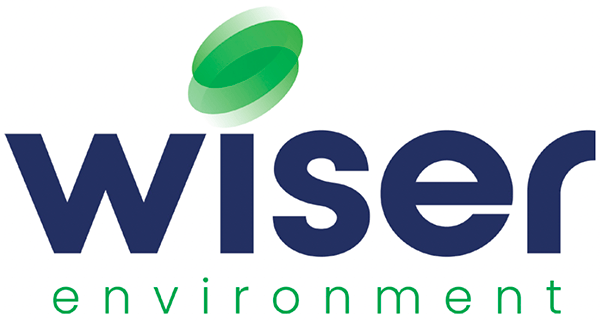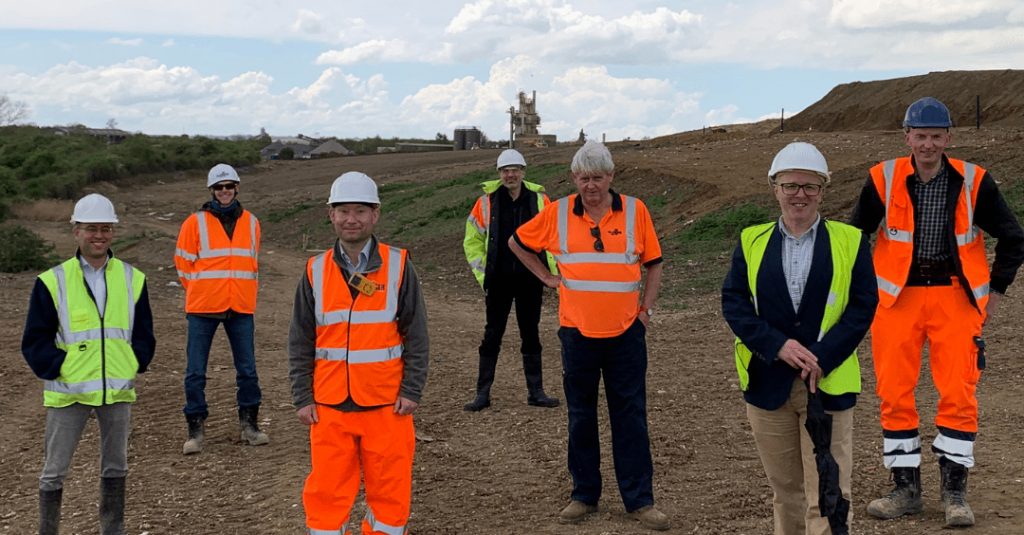Applicable to all facilities which biologically treat waste, the appropriate measures for biological treatment guidance sets out the standards operators need to meet in order to maintain compliance. These measures will improve local air quality and mitigate the risk of serious incidents. To help operators understand how this may impact them, Wiser Environment explains where the new waste controls apply.
In an attempt to bring together several draft technical guidance documents such as ‘How to Comply with Your Environmental Permit Additional Guidance for Anaerobic Digestion’ and the ‘How to Comply with Your Environmental Permit: Additional Guidance for Composting and Aerobic Treatment Sector’, the Environment Agency (EA) intends to publish the ‘Appropriate Measures for the Biological Treatment of Waste’ guidance. These appropriate measures will apply to all new and existing facilities with environmental permits used to treat organic waste. These activities include:
| Open & In-Vessel Composting | Anaerobic Digestion (AD) |
|---|---|
| Mechanical Biological Treatment (MBT) | Compost & Digestate Storage |
| Mechanical Heat Treatment (MHT) | Aerated Lagoons & Activated Sludge |
| Thermophilic Aerobic Digestion (TAD) | Sewage Sludge Treatment |
What are biological waste activities?
As a key element of the waste and resource management industry, biological treatment is the process of decomposing biodegradable waste. For example, garden waste or food waste. Decomposing these wastes can produce biogas or nutrient-rich liquids and organic material. Broadly, biological treatment processes can be organised into two categories:
- Aerobically – with oxygen
- Anaerobically – without oxygen
Aerobic biological treatment
The EA define aerobic biological treatment as enabling “the development of thermophilic temperatures as a result of biologically produced heat in the presence of oxygen”. In other words, aerobic treatment is the process of microorganisms breaking down biodegradable wastes in an aerobic environment. Windrow and in-vessel composting, static aeration, MBT, TAD and activated sludge are examples of aerobic treatment.
Anaerobic biological treatment
Conversely, anaerobic biological treatment involves decomposing similar biodegradable wastes inside an oxygen-free tank. The EA defines it as “a natural process in which microorganisms break down organic matter, in the absence of oxygen, into biogas and digestate”. Anaerobic treatment may involve a variety of activities including AD plants, pasteurisation, feedstock digestion, biogas treatment and carbon capture.
Appropriate measures for biological treatment
The EA’s appropriate measures for biological treatment guidance applies to both new and existing sites. Any new facilities must have relevant appropriate measures in place before their operations commence; complying with Best Available Technique (BAT) Associated Emission Level (AEL). Existing sites must comply with their relevant appropriate measures, BAT and AELs by August 2022.
Notably, the EA do have the power to vary environmental permits. Albeit, this option is likely to be utilised in extreme cases where there either immediate risk of significant environmental impact or the operator actively avoids making the appropriate improvements.
Wiser Environment considers that the EA would encourage operators to follow a voluntary scheme of improvement. To support a proactive approach across the biological treatment industry, Wiser has reviewed the guidance and outlined where the new waste controls apply.
 Standard requirements & capital-intensive improvements
Standard requirements & capital-intensive improvements
The EA identify those requirements considered good-practice and relatively low cost to implement. For these, the regulator has set a deadline of August 2021 for all operators to implement such standards.
In contrast to the standard requirements, other measures are considered to be capital-intensive improvements. The EA have afforded operators greater flexibility here; expecting completion of such improvements as soon as reasonably possible or within a timeframe set in the site permit. Whilst such flexibility is appropriate for most sites, those with nearby sensitive receptors may need to take more urgent action. For installations where there are applicable BAT conclusions, this is no later than August 2022.
Importantly, the measures listed in this article are not exhaustive. Wiser Environment recommends that businesses get in touch for bespoke support.
Waste clarification & characterisation
The guidance emphasises to waste producers the importance of correctly classifying and characterising biodegradable wastes before they reach the process site.
In addition to ensuring that the processes operate safely and in a manner which reduces the likelihood of environmental impact, they also help prevent inorganic wastes – such as plastic or metal – from interfering with the process and negatively impacting quality. To achieve this Wiser Environment recommends that operators use an integrated management system (IMS) to maintain quality and tracking.
Emissions abatement, monitoring & control
The guidance identifies how it expects biological treatment facilities to effectively treat their emissions to air. Specifically, the regulator sets out requirements for various abatement technologies. For example, the minimum monitoring parameters for installed wet and chemical scrubbers. Also, the guidance requires operators to cover lagoons and tanks used to store dirty water, digestate, slurries and other liquids. The cover design must prevent odour, emissions – such as ammonia – and rainwater ingress.
Leak detection & repair plan
Alongside controlling emissions, the EA’s guidance requires sites to develop and use a Leak Detection and Repair Plan (LDAR). An LDAR is a system of procedures that documents the ongoing integrity of the site’s systems. For example, an LDAR plan may identify how leaks become detected and outline the planned preventative maintenance. This ensures the site’s rapid repair effectiveness when systems fail.
Environmental management system
The guidance reinforces the need for a robust environmental management system (EMS). An EMS would primarily incorporate an Accident Management Plan and Odour Management Plan (OMP). Other plans, such as a Noise & Vibration Management Plan, is determined by an environmental risk assessment. An EMS may be integrated with broader business management systems; covering energy, quality and health and safety in an IMS.
For those sites that require EMS support, the management systems experts at Wiser can help. Wiser Environment has provided many of its client’s with robust and functional EMS services.
Technical competence
To operate a biological treatment facility compliantly, sites should have appropriately qualified managers and staff. For permitted operations specifically, they must have technically competent managers (TCM) operating the site.
Wiser Training is an authorised and approved WAMITAB assessment centre that can train and assess operators to the required competency level. The following table details which WAMITAB qualifications and Continuing Competence Tests are suitable for each biological waste activity.
| Description of Biological Waste Activity | Standard Rules Permit | Continuing Competence Activity Specific Test | WAMITAB Qualification |
|---|---|---|---|
| Composting in open windrows / Composting biodegradable wastes | SR2008No16, SR2010No14, SR2011No1, SR2012No7, SR2012No8 | Aerobic Composting | WAMITAB Level 4 Medium Risk Operator Competence for Open Windrow Composting - MROC3 |
| Composting in closed vessels / Composting biodegradable wastes | SR2008No17, SR2010No14, SR2011No1, SR2012No3, SR2012No4 | Aerobic Composting | WAMITAB Level 4 Medium Risk Operator Competence for Closed Vessel Composting - MROC4 |
| Anaerobic digestion facility including use of the resultant biogas | SR2010No15, SR2012No11, SR2012No12 | Anaerobic Digestion | WAMITAB Level 4 Medium Risk Operator Competence for Anaerobic Digestion - MROC5 |
| On farm anaerobic digestion facilities including the use of the resultant biogas | SR2010No16, SR2012No9, SR2012No10 | Anaerobic Digestion | WAMITAB Level 4 Medium Risk Operator Competence for Anaerobic Digestion - MROC5 |
| Storage of wastes to be used in land treatment | SR2010No17 | Transfer - Non - Hazardous Waste | WAMITAB Level 4 Medium Risk Operator Competence for Storage of Non-Hazardous Wastes - MROC6b |
| Mechanical biological treatment (MBT) | SR2008No18, SR2015No12 | Treatment - Non - Hazardous | WAMITAB Level 4 Medium Risk Operator Competence for Mechanical Biological Treatment - MROC18 |

Open composting operators should prevent fires by controlling their pile sizes, conducting regular monitoring and having sufficient access to water.
Fire prevention & DSEAR
Given the potential risks that biological treatment facilities pose, site design and operations must be adequately risk assessed. Importantly, robust IMS and risk assessments can assist in the removal or mitigation of incidents or accidents. Additionally, depending on the type of activity these might extend to Hazard Analysis and Critical Control Point (HACCP), Hazard and Operability Study (HAZOP) or Dangerous Substances and Explosive Atmospheres (DSEAR) risk assessment. The guidance is clear and explicit in this regard.
COMAH
The objective the Control of Major Accident Hazard Regulations 2015 (COMAH) is to mitigate the impact of dangerous substances that can cause harm to the environment. Accordingly, the guidance reminds operators that they must determine if the COMAH applies. Worked examples for AD sites explain how the application of the aggregation rule (biogas plus fuel storage) may mean that some AD plants now come under COMAH.
Pressure relief valves
The guidance requires facilities that have pressurised vessels – for example, biogas storage – to install and maintain pressure relief valves. Once built and fitted to a recognised standard, a competent person should validate that the valve can withstand the required variance in pressure. If the pressure relief valve is damaged or residue has built up, then a revalidation will be required. Also, operators should use their SCADA (supervisory control and data acquisition) system to identify and log all pressure relief events. The EA’s guidance emphasises that date, time and duration of release event must be recorded.
Further biological treatment support from Wiser Environment
Given the limited timescales for the implementation of the standard requirements (August 2021) and implementation of BAT conclusions (by August 2022), operators need to promptly understand the effect this guidance may have on their business and plan improvements over the next two years. For more help and support with determining the impact of this guidance and assistant in implementing these appropriate measures contact Wiser Environment or call on 01480 462232.






